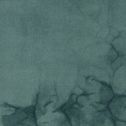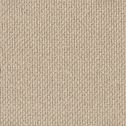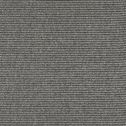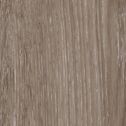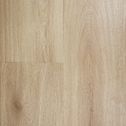2023’s Top Flooring Trends
We spoke to Holly Green from Jacobsen, who discusses the slow morphing of trends throughout the pandemic and how their team has reacted to them.
With each new year comes a tranche of new ideas, concepts and technologies that influence the world of design. Our experience of the changes happening around us informs what we want to see in our architecture and landscaping, our interiors, and our decor.
In the past three or so years, drastic changes to the way we live brought on by the era of Covid has caused a shift in what we prioritise and what we want to surround ourselves with. The change in trends is especially evident in our homes as we spend a large proportion of our time in these areas, whether it’s regarding furniture, bathroom fixtures, colour palettes – or flooring.
Flooring in general has a reputation for being a leading indicator of trends – so if we were to consider what trends will be popular in three years, what can we anticipate these upcoming trends to be now?
We spoke to Holly Green, the Workplace Development Manager, Commercial Sales for Jacobsen, who discusses the slow morphing of trends throughout the pandemic and how their team has reacted to them.
Q: What’s changed in the flooring game in the last few years?
Holly Green: There’s certainly been a shift towards creating healthier living and working environments because the amount of time we spend in both residential and commercial spaces has a huge impact on our well-being.
In the workplace, which is my line of expertise, I’ve noticed a more holistic approach creep in, there is a focus on creating harmony and providing joy in the workplace. This is a direct result of Covid-related lockdowns when people became accustomed to working from home. So, whilst people have been returning to the office, workplaces are trying to make work feel as homely as possible, providing a sense of belonging.
Increasingly, and this is not specific to flooring, you’re seeing workplace environment specifiers incorporate areas where people can come together to work and create, or concentrate in quiet spaces, and eat. But also pray, exercise, and play as well, making these spaces, places that people want to be.
Then there’s the trend of sustainability which has been growing steadily for the last decade. Specifiers increasingly need to look at the impact of flooring on both the environment it’s installed and the wider world. Can it be recycled or reused? And what is its carbon footprint? For flooring especially, landfill should be the absolute last resort for products at their end of life.
Q: What specific flooring trends are you seeing?
HG: Regarding the trends of actual flooring types, we’re seeing a lot of products made from handcrafted materials that use earthy or organic colours and textures. People are becoming increasingly attracted to products that are calming or mood-boasting, and that better service them from both a functional and emotional point of view.
The Scandinese mood board.
A good example of this is Jacobsen’s Shaw Contract Dye Lab carpet tiles, which has an organic design with a natural colour-look. It has all these irregular patterns within it, but it helps to complement a natural calming environment.

Shaw Contract Dye Lab
Fustic Saxon
Then there is our new range of carpet tiles and rugs from the Shaw Contract and West Elm collaboration. This collection embraces the warmth and comfort of home, combining the handcrafted sensibility of natural materials and textures, with neutral and earthy colours, which I think brings a level of sophistication to a space.
Flooring trends have come a long way in a short period; a couple of years ago strong, bold colours were at the forefront, but now earthiness and neutrality is becoming more popular.
Another thing that’s exciting for me is the resurgence of vinyl flooring. Previously it was only really used in a commercial setting such as healthcare and education; but with new technologies and an increased willingness to use refreshing colours and beautiful designs in vinyl flooring, architects and designers are using them increasingly in other spaces like workspaces.
Q: How does Jacobsen react to these trends, and how do you forecast future ones?
HG: We make sure we’re looking well ahead – to 2025 all the way until 2030. We use the world’s leading trends forecaster to gain better insight into global interior trends. This is a really helpful tool that allows us to adapt ahead of time and also keep our fingers on the pulse of what’s happening right now.
Looking to the future, we think sustainability will only become more front of mind for both flooring specifiers and consumers, so that’s a number one priority for us. That means investing in products that fit into these trends but also satisfy sustainable criteria such as low or zero carbon emissions.
We do a huge amount of research into flooring trends and how we can best level-up our sustainability whilst ensuring our products are fit for purpose.
Q: How does Jacobsen help architects when specifying a project?
We talk to our specifiers to thoroughly understand their brief, such as what the design is and what they’re trying to achieve in terms of look, colour, textures, and styles. It is crucial that the products we put forward are fit-for-purpose.
Then we pinpoint their timeline and specify products based on that, we have a variety of products that are New Zealand stock for short lead-times, and suppliers all over the world which works when the timeline is longer.
We also ask whether the project has a sustainability criteria and if the architects of the project have a plan for flooring end of life. It’s important to make both clients and architects aware of the lifecycle of each product, how it will perform over its lifetime, and what the maintenance will look like.
Because we’re committed to preventing our products from entering landfill, we have a product stewardship programme called Re.Form that enables us to support our clients by arranging the reuse their carpet tiles or arranging uplifts of carpet tiles, vinyl and rubber go back to the factory for recycling.
Re.Form recycling in action.
As you can see, there's a lot that needs to be considered when specifying flooring, and our team has the expertise to assist our clients to achieve the best possible outcome for their projects.
